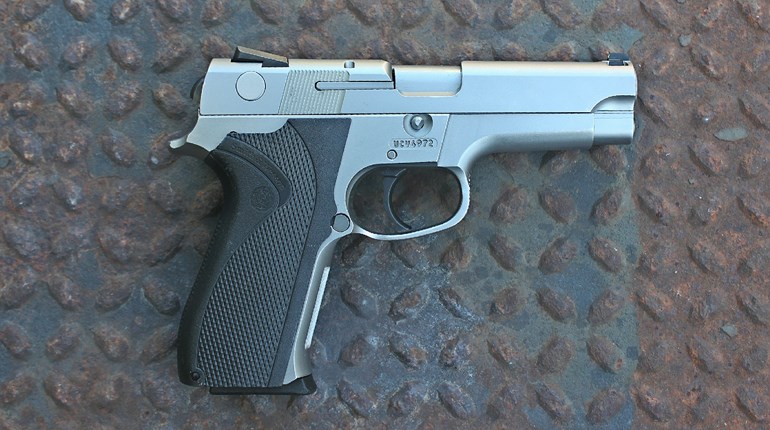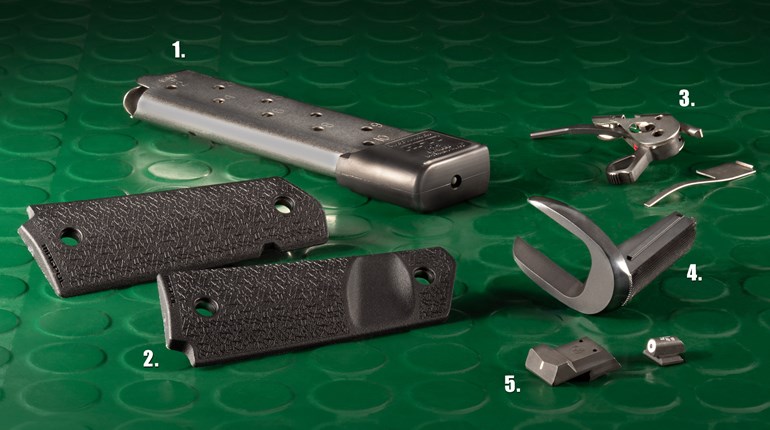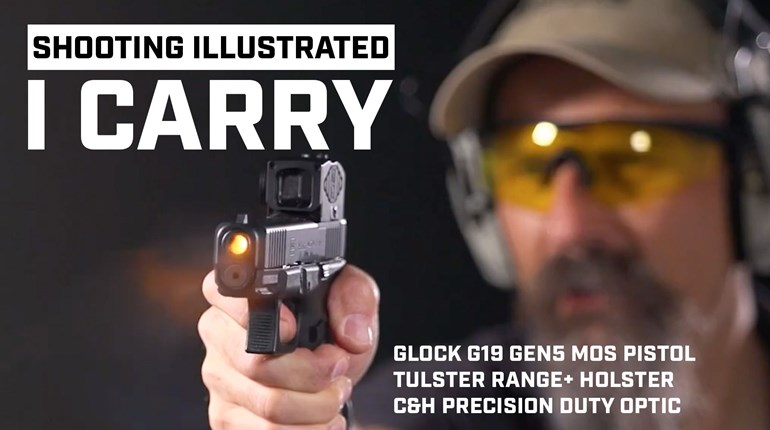
This feature appears in the September ‘16 issue of NRA America’s 1st Freedom, one of the official journals of the National Rifle Association.
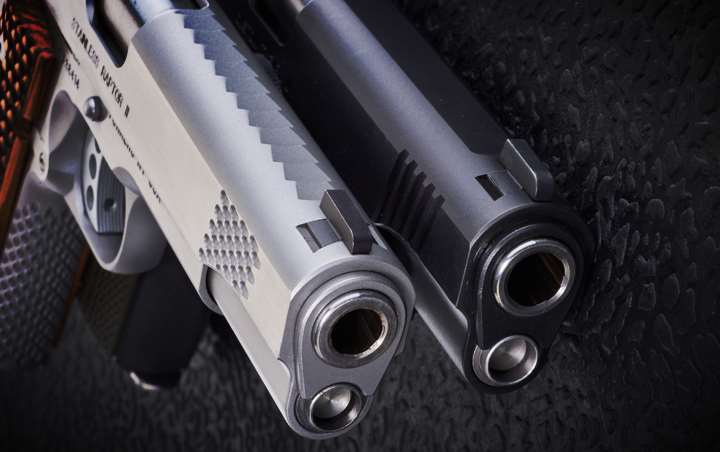
Very few pistols match the comprehensive joy of a Browning-pattern 1911. When you add Kimber quality and calibers other than .45 ACP to the equation, it’s small wonder that the type is roaring into a second century.
One of the best things about a 1911 review is that—after well over 100 years of service in nearly every possible role—you can take substantial general knowledge for granted.
Attributes like single-action (the trigger has the sole function of dropping the hammer), cocked and locked (the pistol is designed to be carried with a round chambered and thumb safety engaged), and single stack (rounds stack vertically in a narrow magazine, which keeps grip size very friendly) require little explanation. Indeed, whole classes of pistols are now defined by their similarities and differences to John M. Browning’s design. If “pre-eminent” or “archetypal” comes to mind, “yup” would logically follow.
Another presumption may emerge as well—that of .45 ACP. After all, the two were developed in harness. Long the big dog of defensive handgunning in many respects, the .45 is still a mainstay in the 1911 universe. Reliable, versatile and often superbly accurate, proper technique allows almost anyone to handle the slowish, low-pressure “roll” of recoil in unexpected comfort. It’s with the cartridge that our two Kimbers diverge from their Browning forebears.
9 mm
9 mm 1911 variants aren’t new: A finger-collet bushing Series 70 Colt resided in our safe for years more than a quarter-century ago. With sufficiently powerful ammo or a lighter recoil spring, it was no wonder, either. The mass of the pistol and sureness of the longer, narrower grip—when compared with modern “staggered” magazine designs—made it a rare pleasure to shoot. But it didn’t share the reliability of .45 ACP brethren, and magazine availability and service life were poor.
The Kimber Stainless Raptor II hammers those issues flat. Our Custom Shop issue ran 100 percent from round one, and with ammunition ranging from 95-grain JHPs up to ultra-heavy 158-grain subsonics. We supplemented the single supplied magazine with several others we keep around and found no issues there, either.
The superb feeding characteristics are twofold. First is the replacement of the frame ramp/chamber throat that works well for larger-diameter .45 bullets, but was less aptly applied to smaller-diameter cartridges. Instead, the Raptor employs an integral ramp that is machined as part of the barrel. This architecture guides the bullet nose directly from the magazine to the chamber over an uninterrupted path.
The second piece of the functioning equation is letting the relatively heavy slide do its work. With plenty of mass in the slide, not a lot of spring tension is needed to hold the action closed until pressures fall to safe levels. The resulting action of the pistol is delightfully docile and fast-recovering, and all other slide manipulations are easier, too—chambering and un-chambering of course, but also malfunction clearing, though these last had to be simulated. The installed 12-pounder (as opposed to 16-16.5 in the classic chambering) yielded no hiccups at all.
The trigger we found superb for a factory gun. After about 200 rounds it settled in at 4.2 pounds on our scale with a nice short reset. This makes it a very acceptable competition gun if that appeals, but also a reasonable defensive choice, particularly given the three-dot tritium Tactical Wedge sights. And here’s a thought if you have shooters “coming up,” too: A better centerfire teaching pistol is really hard to envision.
10 mm
It will surprise some that 10 mm 1911 variants aren’t exactly late-arriving, either, though “checkered” is a fair adjective in discussing availability over the years. The brainchild of Col. Jeff Cooper, the original cartridge was nothing short of ferocious for a duty-sized handgun. Its early days were tumultuous to say the least: Brief FBI consideration/adoption (depending on the source, and in a Smith & Wesson pistol), and parent to the now popular .40 Smith & Wesson are just highlights.
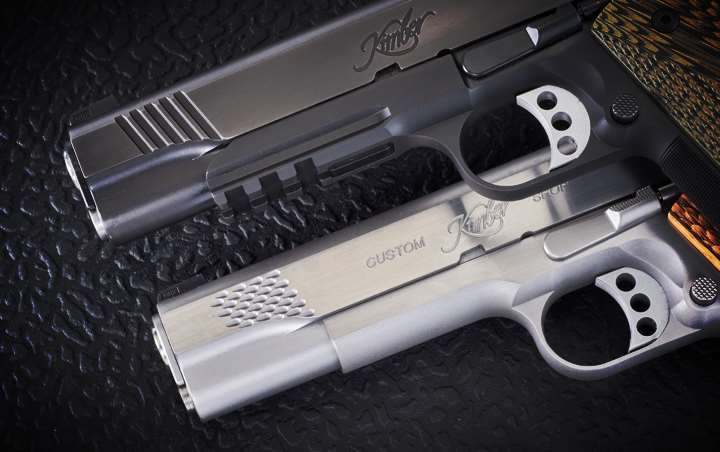
In the 1911, the cartridge earned an early reputation as a gun breaker. Consequently, it quickly became the province almost exclusively of handloaders, but that dedicated crowd soon demonstrated the exceptional promise in the combination. Kimber’s TLE/RL II (Tactical Law Enforcement), at least to our eyes, capitalizes on those earlier iterations with precision. The frame “bridge,” a common break location, is reinforced by the frame transition into the rail, yet demands no special parts inside or out. A Kimber-standard guide rod keeps the 18.5-pound spring straight and smooth-running, even with a treasured few of our original 170-grain Norma JHPs generating not quite 700 ft-lbs. of energy.
Other 10 mm ammunition seemed to fall into two classes, though both performed well. Buffalo Bore “Heavy” (180 grain) just about duplicated the Norma load, as did a light bullet Corbon, but most folks won’t “enjoy” these loads in regular use. We saw no signs that the TLE couldn’t handle them, mind you, but this is tremendous power in a handgun, with all the attendant side effects. If you’re a handgun hunter, however, the TLE is an extremely viable option.
The second class of 10 mm loadings is where the Kimber will really shine for most. G10 grips and good checkering mean that “regular” 10 mm ammunition—here, read “the kind you’re most likely to find” like Remington (180-grain), American Eagle (180-grain) and cci (200-grain)—give up their “hot” .40 S&W-type numbers without undue punishment. By our second shooting session especially, the TLE resolved to “firm” but still very controllable; hardly surprising with energy ranging up to just shy of 500 ft-lbs. We’d also observe that no handloader should be without a good 10 mm—the cartridge is simply that interesting and versatile—and a TLE/RL would bubble up mighty high on our list.
These are fine times to be a 1911 fan, and either alternate caliber Kimber is an addition we’d heartily recommend to any Browning-designed collection. We’ve no doubt either the 9 or 10 mm can be shot with confidence and pleasure for many years to come.
NUTS AND BOLTS
There were some interesting contrasts between our two Kimbers, and it was likely a particular benefit to shoot them side by side. Actual power we intentionally omit from this, of course—outside of handloads, the overlap between 9 mm vs. 10 mm is scant, and the number of “either/or” jobs, small.
The 9 mm Stainless Raptor II is an extremely comfortable-shooting and accurate pistol, but also a pleasing eyeful. As Kimber dutifully reports, the series takes its name from the “aggressive slide and frame serrations, feathered (zebrawood) logo grips, and special scaled texturing accents.”
We quote this to you for a reason: Whether modesty or a sly under-sell we couldn’t say, but such accents are far from mere eye candy. The Raptor style of serrations up top allows for extremely positive slide manipulation, but are at their considerable best on the front strap. Even in very rapid strings of fire, control is superb without the excessive strong-hand finger tension that can so seriously compromise precise trigger press. As for the “scaled” top of the slide, any old bulls-eye shooter will tell you that such a texture might look cool, but it also kills glare when the sun angle is difficult.
The 10 mm TLE/RL we’d call more utilitarian, but don’t confuse that with “less appealing.” It’s a working gun of the first order (recollect what “TLE” stands for), complete with Kimber’s more traditional angled front and rear cocking serrations, and a beefy accessory rail. But it remains a handsome pistol, with fit, finish and function you’ll have no tendency—or need—to baby.











